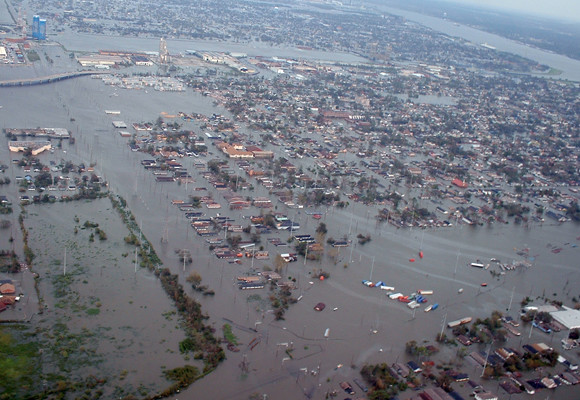Blockchain technology and parametric insurance should be included in the Federal Emergency Management Agency’s toolbox as it strives to close the nation’s flood insurance coverage gap, according to a draft report by an advisory committee that makes recommendations to the agency’s director.
FEMA’s National Advisory Council said both high-tech solutions have potential to speed up claim payouts.
“Often, especially with large-scale disaster, even in situations where individuals are fully insured, the lengthy time to process a claim – often taking many months or years – means that the recovery and reconstruction process at the household level is delayed,” the draft report says. “This in turn leads to disaster displacement, which, when added to the low levels of protection against hazards, like floods, fires, windstorms, and others, yields abandoned properties and economic ruin.”
Parametric insurance is designed to release funds immediately when triggered by a predetermined risk threshold, such as flood levels or barometric pressure, the council said in the draft report. Blockchain can be used to create a land and property registry stored off site in a secure platform, the council said.
The council’s Federal Insurance and Mitigation Subcommittee recommended parametric insurance and blockchain during a meeting in October, online records show. Those innovations were among numerous measures recommended by the panel to address the coverage gap and increase resiliency.
The council collected recommendations from its several subcommittees and packaged them as a draft report during a meeting on Nov. 5-7. A spokesman for the agency said the council has 90 days from that date to produce a final report.
Lisa Miller, a lobbyist in Tallahassee, Fla. who advocates for increased private flood insurance coverage, said it is refreshing to see FEMA embracing technical solutions.
“This entire industry is moving from yellow legal pads to artificial intelligence,” Miller said. “The parametric insurance concept — all this new technology — for security purposes, is where it’s at.”
Any blockchain and parametric solutions would presumably be made a part of the National Flood Insurance Program, which happens to be in a state of flux at the moment. The program is operating under a Congressional authorization that expires today, although claims can continue to be paid without a continuing authorization. The Trump administration had proposed a new rate-setting structure that would likely increase rates in high-hazard areas, but members of Congress have pushed back.
In the meantime, FEMA, through its advisory council, continues to solicit public comments on how to improve preparedness and resiliency.
The draft document says that the decentralized nature of blockchain technology could be used to provide critical information, such as land ownership records and personal identification, through a registry, speeding the response after disasters such as Hurricanes Maria in Puerto Rico and Harvey in Texas.
Blockchain technology uses a cryptography to securely link blocks of data together in records that cannot be altered without leaving a trail visible to all users. Last month, a the RiskStream Collaborative — an insurance industry-supported research organization — completed production testing of system that will allow claims adjusters from multiple insurers to share access to a single notice of loss.
The draft report also contains several less tech-dependent recommendations to close the insurance gap, including:
- Educate the public about the benefits of flood renter’s insurance and hidden hazards in real estate, rental properties and communities.
- Stress test state insurance guaranty funds to determine if they can withstand large-scale disasters and insurer insolvencies.
- Creating more offerings for state and local governments to reduce rates of self-insurance of infrastructure.
The draft report also includes numerous recommendations to improve financial preparedness for disasters, improve building codes and code compliance, improving preparedness for Indian tribes and rural communities, building resilient infrastructure, increasing funding for mitigation.
Was this article valuable?
Here are more articles you may enjoy.


 Tesla, EEOC Plan Talks to Settle Factory Racism Suit
Tesla, EEOC Plan Talks to Settle Factory Racism Suit  Palantir Poaching Suit Called ‘Scare’ Tactic by Ex-Employees
Palantir Poaching Suit Called ‘Scare’ Tactic by Ex-Employees  Surging Oil Tanker Insurance Points to Growing Black Sea Chaos
Surging Oil Tanker Insurance Points to Growing Black Sea Chaos  JPMorgan Wins Gender Pay Gap Dispute Against London Analyst
JPMorgan Wins Gender Pay Gap Dispute Against London Analyst 